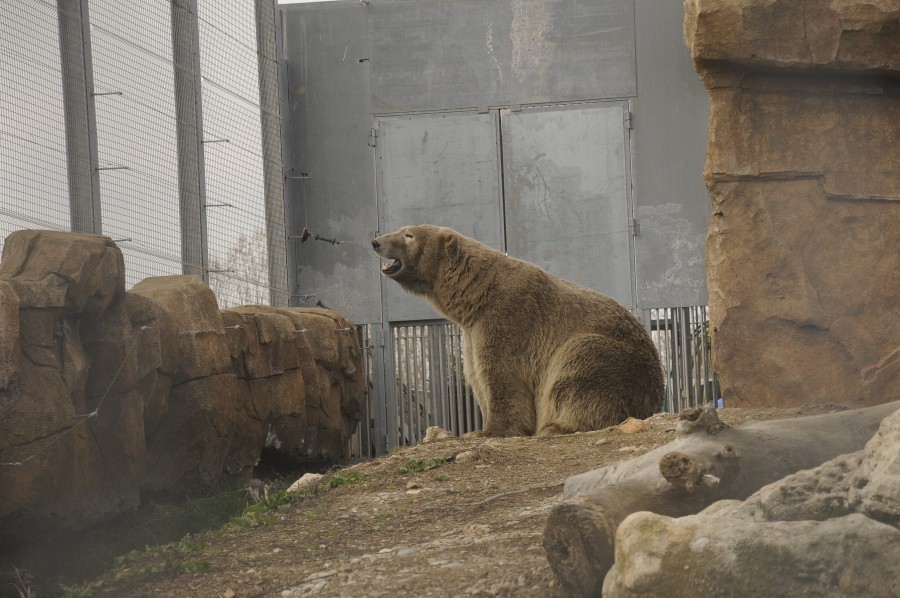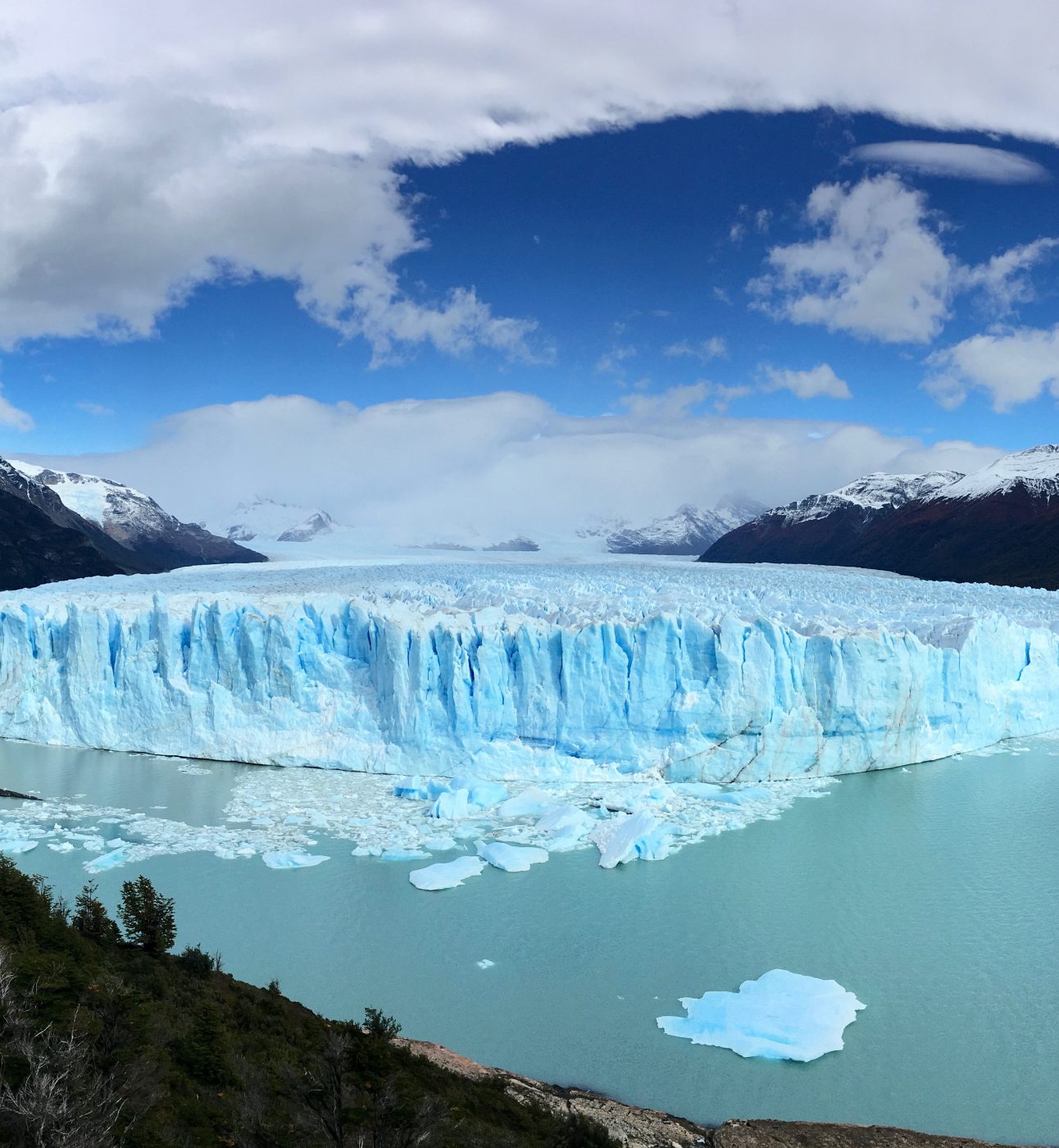
IUCN STATUS
Vulnerable
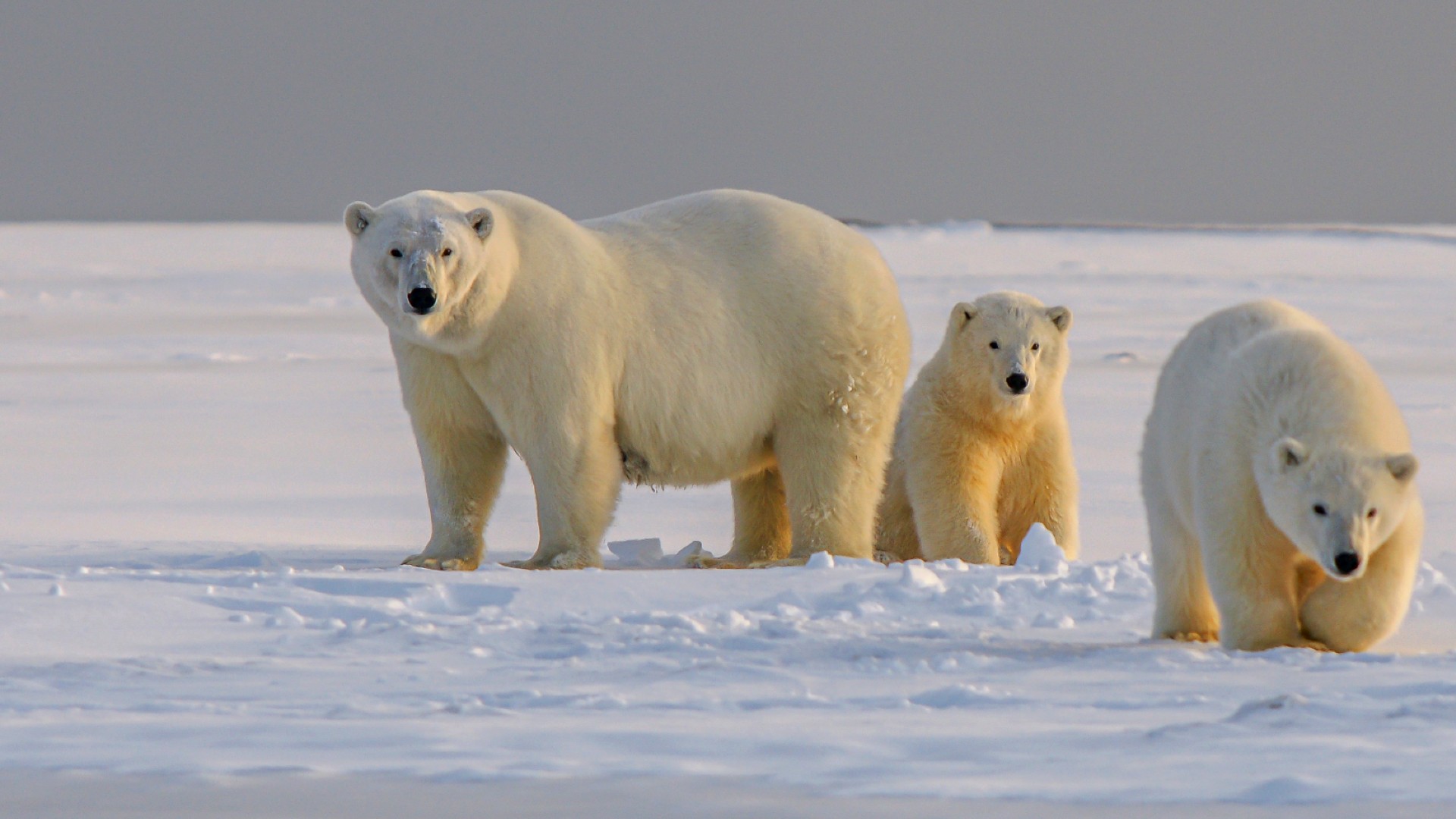
Ursus maritimus
Polar bears are among the few large carnivores that are still found in roughly their original habitat and range, and in some places, in roughly their natural numbers. This is mainly because their ranges do not overlap with areas suitable for human use. However, they are extremely vulnerable.

Vulnerable

Population unknown. Last assessed 2015

Carnivorous

Forest, scrubland, grassland, as well as marine oceanic, intertidal and coastal habitats

Across the Artic Ocean, primarily north of the Arctic Circle

Weight: 136-600kg, length: 1.8-2.7 metres

Climate change, hunting, pollution, conflict
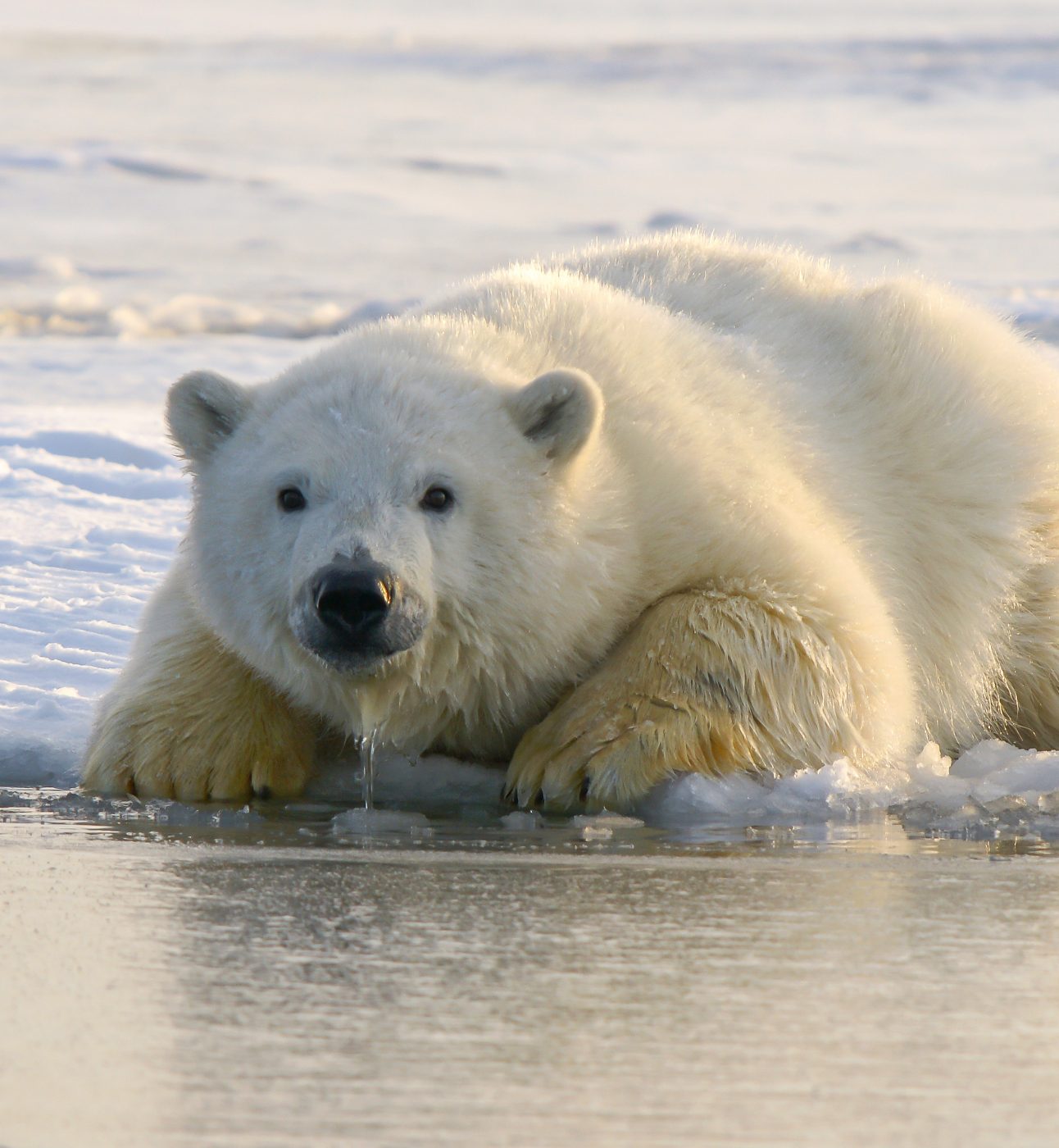
Though they appear white, polar bears have black skin, and their fur is translucent. It appears white because it reflects visible light. They also have a blue tongue.
Polar bears are the largest bear in the world and are the Arctic’s top predator. They can run at 40 kmph. They have 42 razor-sharp teeth and 30 cm wide paws. There are four inches of fat under the polar bear’s fur to keep it warm. Ursus maritimus means ‘sea bear’ – appropriate for a bear that can swim at 6 mph in the freezing Arctic seas.
Polar bears live throughout the ice-covered waters of the circumpolar Arctic. They are more common in shallower, ice-covered waters near the continental shelf where currents boost the health and growth of life in the water. In the summer, higher numbers of polar bears are found on land. A loss of sea ice is forcing bears on to the land more often and increasing their contact with humans.
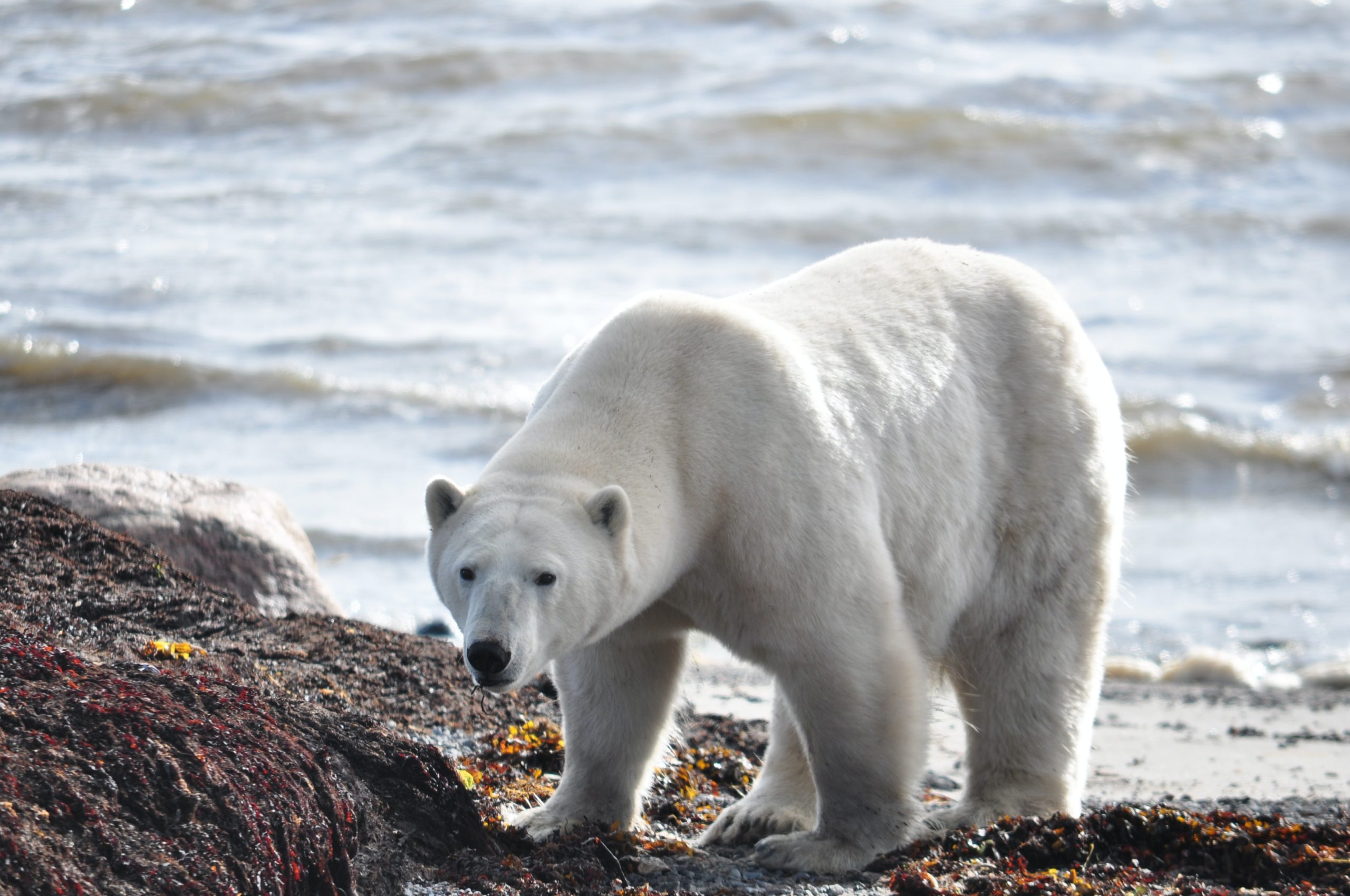
Wild polar bear (c) Jason Hillier, Unsplash
Polar bears live for 20-25 years. Females mature at around 4 to 5 years. After a gestation of between, 195 to 265 days, it is most common for mothers to produce to twin cubs, but single and triplet litters do occur. Pregnant females give birth in dens in snow drifts or slopes on land, close to the sea, or on sea ice. Newborn polar bears are blind and with little fur. They grow rapidly, fed on rich milk from their mother. Cub mortality is high in the first year, as they can die of starvation or be killed by other males, but those who survive will stay with their mother for two years.
Polar bears are excellent swimmers. They are solitary, and they catch their prey (usually seals) by ambushing them near breathing holes, stalking them when they rest on ice or digging young seals from their snow shelters.
Polar bears communicate through scent, sounds and body language. Their largely solitary existence and large home ranges mean vocal communication is not used regularly. If they feel threatened or aggressive, polars bears may hiss or growl. They also use a chuffing noise to communicate with their cubs or potential mates.
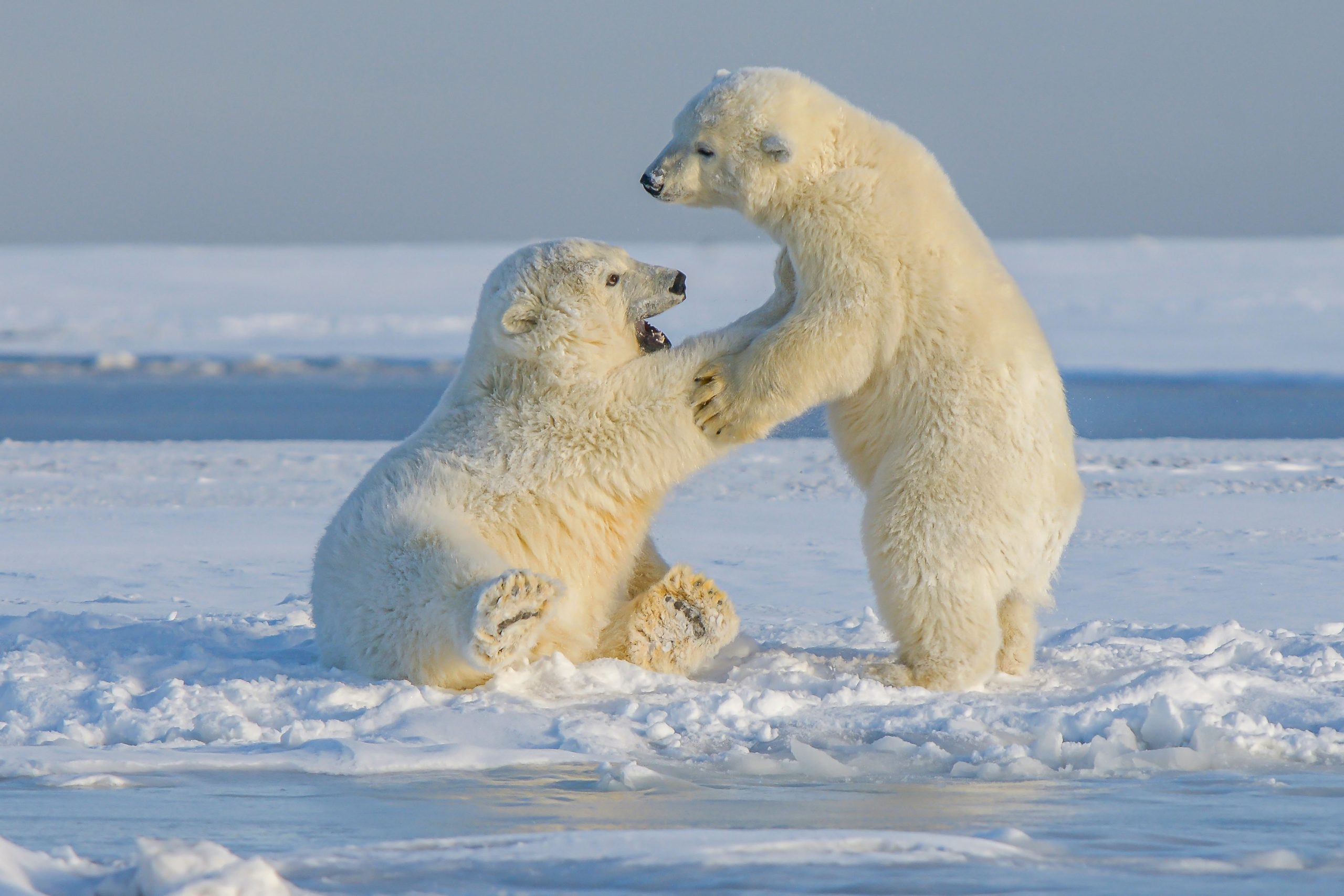
Polar bear cubs (c) Hans-Jurgen Mager, Unsplash
The greatest threat to polar bear survival is loss of Arctic sea ice due to human-induced climate change. Climate change is resulting in higher ambient temperatures and an increasing number of erratic weather fluctuations across the range of polar bears. The loss of Arctic sea is progressing faster than most climate models predicted. Shockingly, it is now expected that there will be ice free summers in the Arctic by 2040, when only a fringe of ice will remain in Northeast Canada and Northern Greenland.
This will be devastating for polar bears. Polar bears rely heavily on sea ice for traveling, hunting, resting, mating and, in some areas, maternal dens. Polar Bears that have continuous access to sea ice can hunt throughout the year. As sea ice melts, polar bears are being forced to spend several months on land, where they primarily fast on stored fat reserves. Periods of extended fasting are predicted to lead to starvation and reproductive failure, meaning fewer cubs.
Continued climate warming will increase uncertainty and pose severe risks to the welfare and survival of polar bears. The “Last Ice Area” – the region of the Arctic Circle along the northern shores of Canada and Greenland, is likely to become critically important for polar bears and other life dependant on sea ice.
Climate change can also lead to increases in forest fires that may have adverse effects on maternity denning habitat in sub-Arctic regions. Additionally, climate change could affect the spread of infectious diseases among polar bears by increasing potential exposure to disease-causing agents. These outbreaks may become a significant threat to polar bears.
The US, Canada, and Greenland allow and manage a ‘subsistence harvest’, of polar bears, principally for meat, hides for clothing, and small-scale handicrafts. This is a traditional practice which has cultural, nutritional and economic importance to native people. Harvest is prohibited in Norway and Russia.
Sport hunting of polar bears only occurs in Canada and must be guided by local Inuit hunters.
Although polar bears live in relatively pristine Arctic regions, toxic chemicals and industrial pollutants from human activities reach them by air and ocean currents as well as river run off. As apex predators, at the top of the food chain, polar bears are exposed to high levels of pollutants because these substances build-up and concentrate in each level of the food chain.
Increasing development and resource exploration in the Arctic, ice-breaking and shipping, ongoing oil extraction and associated oil spills are all contamination risks to the polar bear’s food chain.
Conflict between polar bears and people is steadily increasing as their habitat, sea ice, shrinks due to human induced climate change. Polar bears are increasingly wandering into human habitations where food can be easily found. Polar bears can be extremely dangerous so their presence instils fear in people and can reduce tolerance. It can also increase the numbers being killed in attempts to deal with so–called ‘problem polar bears’.
